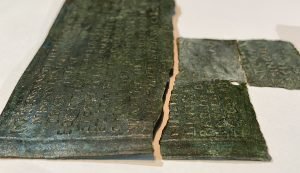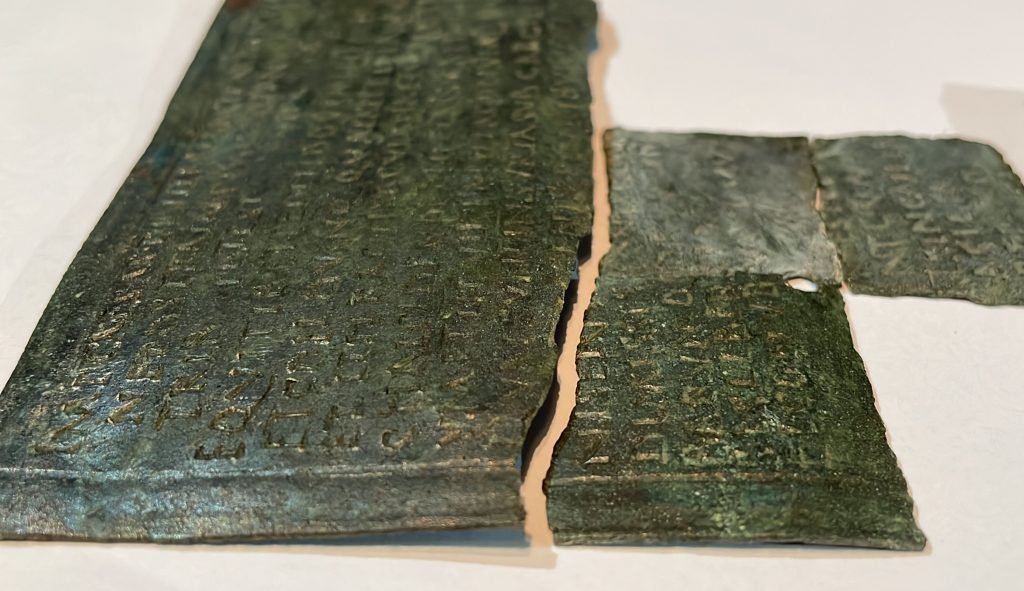Archaeologists have discovered a bronze military diploma dating back 1,898 years ago during excavations in the ancient city of Perre, located in the southeastern Turkishprovince of Adıyaman.

Work began in 2001 to discover what the ancient city of Perre – one of the five largest cities of the Commagene Kingdom – had to reveal. Continuing in intervals, the excavations unearthed a historical Roman fountain, large blocks of stones, water ducts and various architectural structures this year.
Amid the ongoing studies, a military diploma was recently found inscribed on a bronze plate. After careful examination, researchers came to the conclusion the certification featuring personal information was nearly 2,000 years old. The document itself marks 20 years of the soldier’s service in the army and entitles him to marry and become a citizen of the region.
Adıyaman Museum Director Mehmet Alkan told reporters that they recovered the military diploma on May 24, the last day of their excavations. With the help of ancient history and languages expert professor Mustafa Hamdi Sayar, the text was translated and it was determined that the plate was a military diploma.
Noting that there was an inscription written in Latin on the diploma, Alkan added: “The inscription includes information about Calcilius Antiquus, who served in the military during the reign of Roman Emperor Hadrian. This person in question was given an award after serving in the military for 20 years. He was given the right to marry and gained Roman citizenship.”
Explaining that 100,000 copies of these kinds of documents were prepared in the world at that time and only 800 of them have survived until today, Alkan said: “We know that 650 of them were studied. With this military diploma, we left behind an exciting season. We will continue the excavations that we paused in 2022.”
Perre was an important city for religious and geopolitical reasons. The beauty of the city’s water was even mentioned in ancient Roman sources, however, Perre lost its importance after the Byzantine Period and never regained its former glory. The tombs, Perre’s main attractions, were carved into the rocks and are stunning in appearance. Also, the large mosaics found in the city bear fascinating heart motifs, 3D globe figures and intriguing octagonal geometric modules.


